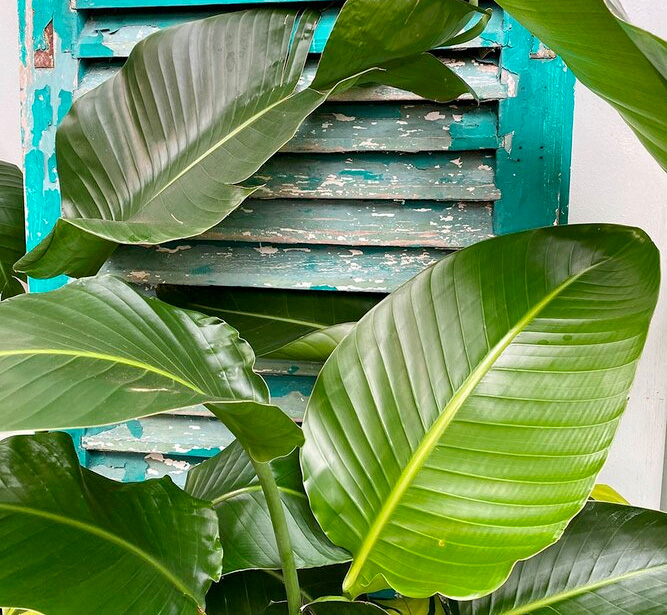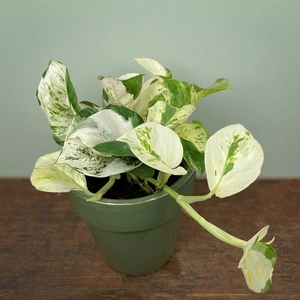
It’s safe to say that the need for green is sweeping the nation. With houseplants becoming the new pets of the younger generation, creating a green haven in the home Is becoming the new norm. Plants bring a host of health and wellbeing benefits– calming effects, air purification and a sense of purpose. Some countless articles and statistics advocate the power of plants; you’ll never honestly know until you experience it first-hand.

The terms indoor garden and indoor jungle are trending, but what do we really mean? There are more people interested in creating an indoor garden. Still, once you’ve got the indoor plant bug, plant lovers often go for the full monty and want an ‘indoor jungle.’
The Boma indoor jungle checklist requires plants on every level– from mini plants to large specimens, hanging and climbing. Doing this transforms a space from top to bottom, but it’s not always that simple; you need to know your space. Light levels, average temperature, humidity, and watering are vital in a flourishing indoor jungle; think of your living room as becoming a mini-Amazon Rainforest!
Here is a selection of tropical houseplants that, when put together, can create an incredible living, breathing indoor jungle.
Monstera adansonii

Monstera is hands down the most widely known aroid thanks to the iconic Swiss cheese plant (Monstera deliciosa) and makes fantastic foliage plants. Monstera adansonii is a stunning climbing plant native to Central America; with heavily fenestrated foliage and vibrant green leaf colour, it is a showstopper. They come in various sizes, from mini plants to large specimens grown around central coir poles.
Monstera is relatively straightforward for plant care. Sufficient light is a must for healthy even-growth but be careful not to place in direct sunlight as it will scorch the new growth. Humidity is paramount to avoid dry, crispy leaf margins and to keep new growth lush, so keep away from an open heat source and try to mist/ place on a pebble tray.
As this plant is a climber, it’s perfect for trailing around a window, supporting against an interior wall or wrapping around a coir pole. If your plant becomes too unruly, even by indoor jungle standards, prune it back to your desired height. The cuttings taken can be put in a glass of water on a sunny windowsill to root. You can add them to the container of the main plant after rooting.
Philodendron scandens ‘Brasil’

The heart-shaped Philodendron is a classic sprawling house plant with beautifully shaped foliage. The plants often have striking yellow and green variegation and bright coral leaf sheaths. The fabulous foliage makes this house plant stand out from others. It is the perfect plant to add to your indoor jungle collection to break up and add variety to masses of green.
Philodendron scandens ‘Brasil’ is an aroid native to Central and South America, so it loves bright light and high humidity. As this plant has a climbing or trailing habit, Boma sells Philodendron in several sizes and forms. The garden centre stocks Philodendron as mini plants, hanging plants, medium size plants, and large plants trained around a central coir pole that you can feature at home or in the office.
Philodendrons are very easy-care plants, similar to Monstera. Keep them out of direct sunlight as this could scorch new unfurling leaves- indirect is perfect. Remember that heat rises if you place your Philodendron Brasil high or in a hanging pot. They will inevitably dry out quicker than plants on ground level so check for watering more regularly.
Like Monstera, clip it back to the desired length if your heart-shaped Philodendron gets too out of hand. You can quickly propagate the cuttings in a glass of water.
Howea forsteriana
You may find yourself transported to a tropical island when admiring the lush green foliage of the parlour palm. This classic indoor palm tree gives that instant tropical feel with large architectural leaves and long slim stems. That makes it a great feature plant, adding that large plant element when creating your indoor jungle. The parlour palm or Kentia palm bagged its botanical name Howea forsteriana from where it is found growing and from who founded the island- Lord Howe Island. Located between Australia and New Zealand, Lord Howe Island is a tropical paradise founded by Englishman Lord Howe in 1788. Discoverers brought the first parlour palm seeds to the UK in 1870– since then, Howea has been a firm favourite for large houseplants.
Caring for Howea palms is relatively straightforward, with the only real struggle reaching optimum humidity levels. It’s imperative to provide adequate humidity (minimum 40%, ideally 60%) and keep them away from open heat sources such as radiators. The right conditions will keep the lush foliage green and avoid browning tips.
Besides reaching humidity levels, kentia palms are plain sailing; try to keep the soil moist but not drenched and place it in bright indirect light. Allow your Howea to dry slightly, as you may see brown markings on leaves from cold and wet damage when temperatures drop.
Calathea makoyana
Calatheas are a very well-known group of plants, primarily for their ornately patterned foliage, originating in the jungles of South America. Calathea makoyana, commonly known as the peacock plant, is a stunning species with large oval-shaped stained glass-like foliage. The colouration is equally gorgeous with rich burgundy under-leaf and multiple shades of green on the surface- this houseplant is a living work of art.
Calatheas are incredible air purifying plants, scientifically proven to remove toxins from the surrounding environment. Not only are they fabulous looking but fabulous workers too! Many Calatheas almost look too pretty to be natural plants. Due to their popularity, breeders have created many new cultivars. Calathea makoyana is a species of Calathea, meaning that it has had no human intervention. If the rainforests of Brazil can house this gorgeous plant, so can your indoor jungle!
It is often best to build your indoor jungle with some of the other houseplants listed previously. Calatheas can be slightly temperamental and even borderline demanding with their care needs. They love a warm spot but not dry heat, as they can suffer if temperatures drop too low. They need a lower light area as harsh direct light can bleach and scorch the foliage. Ensure not to overwater as this can be the ultimate downfall for your Calathea. Putting their pickiness aside, Calatheas make beautiful houseplants and showy addition to any indoor jungle.
Epipremnum aureum’ Marble Queen.’
You couldn’t have an indoor jungle without an Epipremnum! As a climbing or trailing tropical plant belonging to the aroid family, Epipremnum is commonly known as pothos or devils ivy. Native to the islands of French Polynesia, they love it hot, sunny, and humid: all things tropical. Marble Queen is a gorgeous variety with mottled white variegated foliage and oval leaves that can grow to enormous sizes in the wild.
Epipremnum are fantastic plants for those starting their indoor jungle as they are very easy to care for and don’t require too much attention. It’s best to keep the soil moist, but it can dry between waterings. The form of your Epipremnum (hanging or not) and where it is situated will determine how fast your plant will dry. The pot plant size ratio will also play a massive part in how often you water your plant. The larger the pot, the more water the soil will hold, as opposed to the larger the plant, the more it’ll drink. They can cope with some direct sunlight, but I would avoid scorching midday summer sun as this could fry the leaves if exposed too for too long. A bright indirect spot is perfect.
Strelitzia nicolai
Foliage, foliage and more foliage– Strelitzia nicolai is a knockout foliage plant! Also known as the white bird of paradise plant, it is a truly stunning variety with enormous, swooping leaves and tall chunky stems. Strelitzia nicolai is renowned for its larger, greener leaves and towering heights. Its more commonly known cousin, Strelitzia reginae, produces exotic orange blooms. If you’re lucky alien-looking blue and white flowers will bloom. However, even though Nicolai does produce flowers, it’s rare to blossom as a houseplant. If you can provide year-round bright light and feed it regularly, you may be lucky once your plant has reached roughly 4-5 years old.
Being a South African native, Strelitzia is a Boma favourite and comes in a range of different sizes, from 30cm to 2m. This spectacular houseplant prefers a sunny spot to be left to dry between watering to avoid any chance of root rot. They also love to have their roots restrained so they can be kept in a very tight pot until they burst out of it. Given the space, your bird of paradise can reach heights of around 3m as a houseplant in the UK, so it pulls its weight big time in the indoor jungle department!
These are just a handful of tropical Boma buys and houseplants that transform any room. Whether you want that indoor jungle effect or just the odd 1 or 2 houseplants to start with, all of the plants listed are easy care, affordable beauties.
If you're dreaming of creating an indoor garden jungle and looking for more advice, pop into Boma Garden Centre in Kentish Town London and speak to the indoor plant team.































